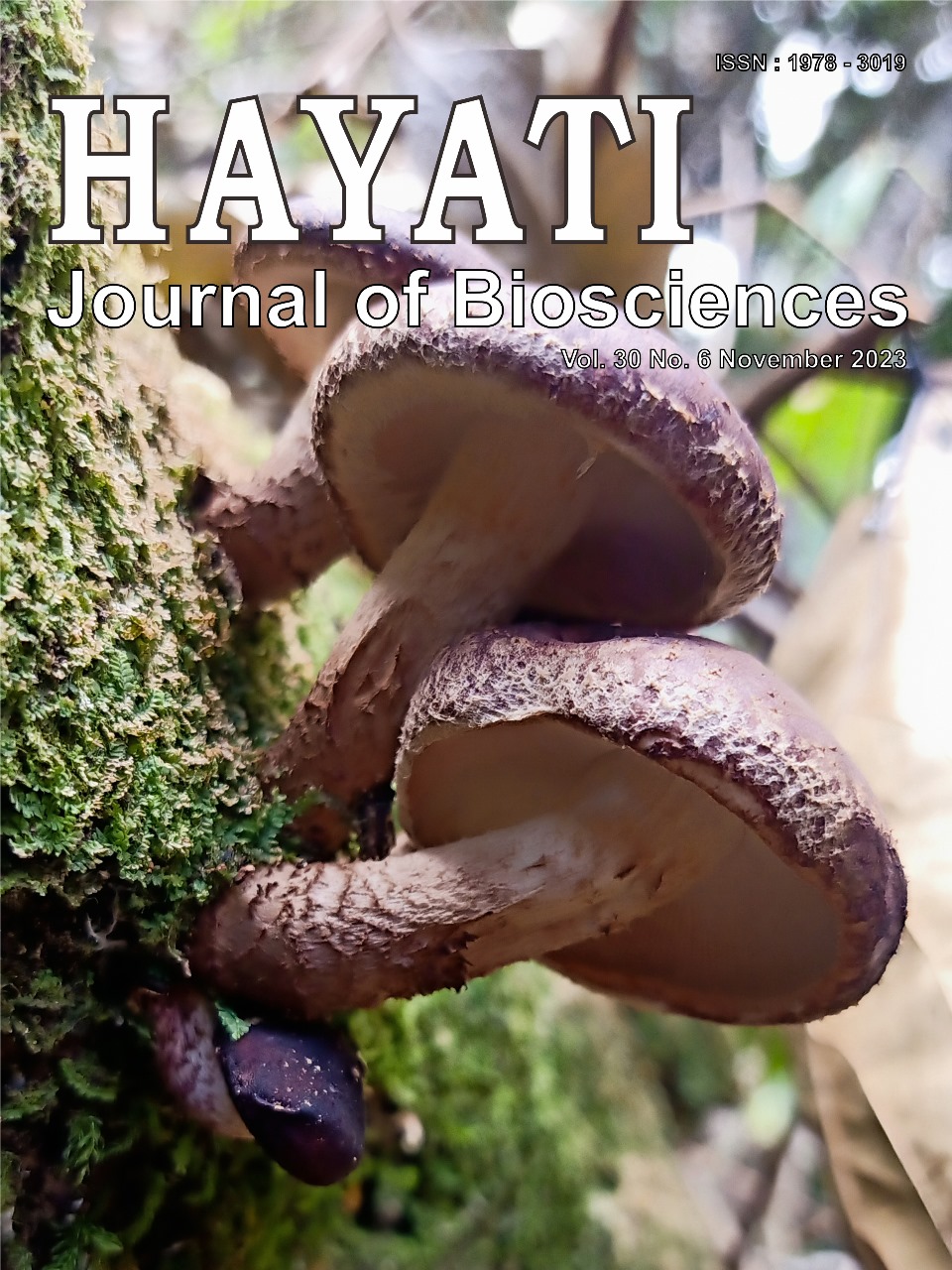Assessment of Teratogenic Effects of Sappan Wood (Caesalpinia Sappan L.) Extract In Rats (Rattus novergicus)
Abstract
Treatment using plant materials has been widely researched and observed to assist in curing a disease. Medicinal products derived from herbal plants are proven useful as drugs must follow guidelines not to cause acute or chronic toxicity. The purpose of this study was to investigate the teratogenic potential of an ethanolic sappan wood extract on the growth of unborn rats. Six groups of pregnant rats are created: Aquadest was administered to the Control group, whereas the Treatment groups received 100, 200, 300, 400, or 500 mg.kg-1 BW of an ethanolic extract of Sappan wood. On the twenty-first day of gestation, pregnant rats were CO2-euthanized and delivered vaginally. Rats' body weight during pregnancy was observed, along with fetal growth measurements, viscoelastic examination, and skeletal development. Wistar rats' reproductive systems, fetal body weight, body length, and tail length were all unaffected by ethanol extract of Sappan wood at doses from 100 mg/kg to 500 mg/kg. In fetuse rat from the control group and the five dosage groups, no skeletal development had taken place and there were no obvious external abnormalities. Even at the maximum dose of 500 mg, sappan wood extract demonstrated no teratogenic effects on the development of fetal rats.kg-1 BW.
Downloads
Copyright (c) 2023 Jeri Nobia Purnama, Erick Khristian, Mas Rizky A.A Syamsunarno, Yusof Kamisah, Ratu Safitri

This work is licensed under a Creative Commons Attribution-NonCommercial 4.0 International License.
HAYATI J Biosci is an open access journal and the article's license is CC-BY-NC. This license lets others distribute, remix, tweak, and build upon author's work, as long as they credit the original creation. Authors retain copyright and grant the journal/publisher non exclusive publishing rights with the work simultaneously licensed under a https://creativecommons.org/


















.png) IPB University
IPB University Department of Biology
Department of Biology The Indonesian Biological Society
The Indonesian Biological Society 

